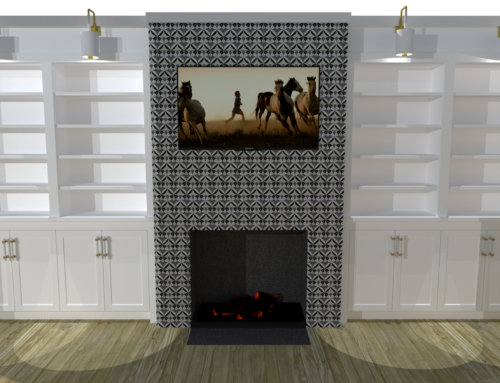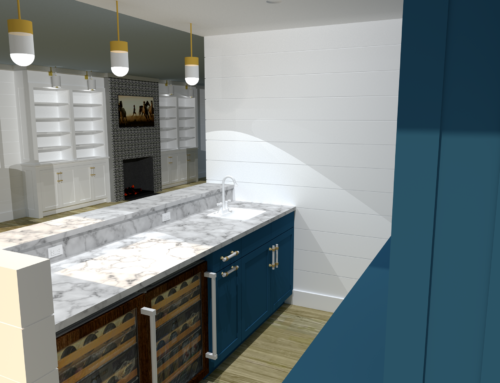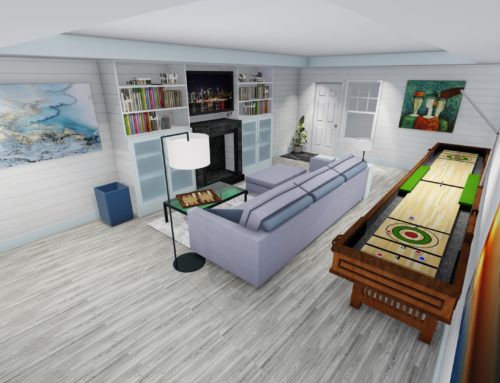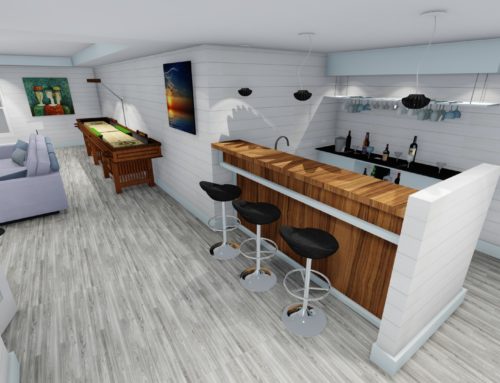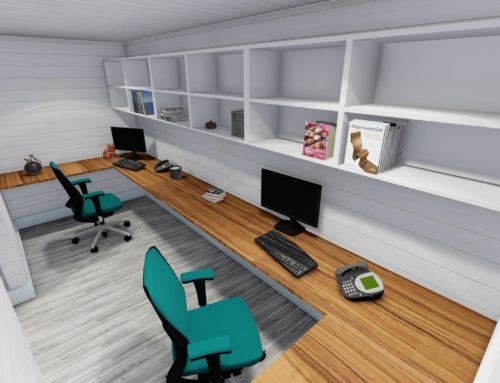Project Description
How to Effectively Design your Kitchen- A Complete DIY guide
Having a good looking kitchen makes all the difference. You may not be spending all day here, but it’s still one of the most important rooms in your house. If you’re tired of your current kitchen design, want to renovate, or some new trends have inspired you, here’s a complete guide.
I have shared a step-by-step guide to perfect kitchen design. You may have always hired an interior designer to do it for you, but it’s still important to have the knowledge of what they’re doing. Also, you never know, maybe I can inspire you to do it yourself and for your friends.
How to Design your Kitchen
i) Identify your kitchen cabinet dimensions
Various manufacturers make cabinets with different dimensions. To effectively design your kitchen, you need to measure your cabinet dimensions. Knowing how much space it occupies will help you identify where to place it and where to place the other components.
ii) Make a plan for the remaining kitchen space
After measuring the dimensions of the cabinet, it’s time to measure up the remaining space. If you hate math, don’t freak out, these are just basic measurements. The first step is to choose one unit of measurement and stick to it. You can choose inches and feet, meters, centimeters, or millimeters. The units can be determined by the units used by your cabinet’s manufacturer. The most crucial areas to measure are the floor, wall, windows, gas, and water pipes.
The next step is to reduce your kitchen space to a scale. Don’t just estimate. Make accurate measurements and reduce them to a scale so as to present it on paper. There are apps available online that can help you in making these measurements.
iii) Draw the outline of your kitchen
Kitchens come in different shapes based on the architectural design of your house. The following are some of the most common kitchen shapes that you can draw inspiration from;
• U-shaped kitchen
• G-shaped kitchen
• Galley kitchen
• L –shaped kitchen
• Kitchens with islands
In the outline, clearly, show where each item should go. A basic outline should have tables, islands, and cabinets.
The shape and size of your kitchen should guide you in selecting the appropriate size and shape of your furniture. When coming up with a kitchen design, you should also consider how much privacy you need in your kitchen. You can choose to create a big opening from the kitchen towards the dining room. If you’d like to keep the kitchen activities more private, you can create some sort of a window opening and counter. The outline helps you experiment with these aspects until you find one that fits.
While still at the planning stage, plan for where to place electrical outlets for your appliances. If you have them already, you can plan to change them or incorporate them when allocating spaces for them.
iv) Plan where to place the kitchen appliances (Kitchen triangle/polygon)
After making the measurements and drawing the outline, it’s time to place the kitchen appliances.
Kitchen triangle
A kitchen triangle is a tool designed in the 1940s. It is based on where to place the sink, refrigerator, and range as you are cooking in the kitchen. Since the 1940s, things have changed, and the kitchen triangle has had to evolve too. This is because there are more diverse appliances invented every day. Also, the kitchen has become not only a cooking area, but also a place to read, play games, and have conversations with friends and family.
Kitchen Polygon
To incorporate all these in kitchen design, you’ll come up with some sort of a polygon. A kitchen polygon aims at helping you allocate the gadgets, appliances, storage areas, and cooking areas strategically. This gives you enough space and anyone else to move around in the kitchen without interfering with the kitchen activities.
When deciding where to place and how much space to allocate each appliance, you should be guided by the kitchen activity. Each activity requires a different counter space, storage area, and a different set of appliances. Some of the common kitchen activities include;
• Food preparation.
• Cooking
• Clearing and washing dishes at the sink.
• Setting up the dining table
• Self-service of quick snacks, water or juice
• Watching TV or playing video games (Yeah, some people play in the kitchen)
Once you identify the activities you’re always carrying out in the kitchen, you can place the appliances around the kitchen in the form of a polygon. Let’s look at one sample activity and how you would set up the kitchen polygon.
Food Preparation
• When you’re preparing food, you need appliances such as a freezer, refrigerator, and sink.
• On the counter, you need a place to place the necessary groceries, chop them, and a space for the countertop appliances.
• When it comes to storage, you need a place to store the groceries, utensils, waste, recipe books, and any other items important in the kitchen.
Therefore, here’s how you’ll set up your kitchen polygon;
• The refrigerator should be easily accessible without interfering with food preparation. If someone needs something from the refrigerator, they should be able to do it without interfering with food preparation.
• Allocate the area for the sink. I did mention dimensions for water pipes earlier. These will help you determine where to place the sink.
• Divide the countertop into sections for placing the groceries, a section for chopping them, and a section for the countertop appliances you need for preparing food.
• Place the waste storage close to the counter.
• When creating storage units (More on this later), make sure that they are close to the food preparation area.
• Lastly, place extra appliances such as the TV where you can watch it as you go about your activities.
Food preparation and cooking are some of the main activities you carry out in your kitchen. Your kitchen design should revolve around these main activities while considering other important as well as miscellaneous activities.
v) Set up the storage areas
Storage units are a very crucial aspect of kitchen design. If you don’t get it right, you may keep making trips in the kitchen to get this and that, wasting a lot of time and energy. In steps iv, we’ve discussed how to place items in a kitchen polygon. For instance, I did say that you should create a space to place the groceries on the counter. To make it easier, you can use bowls to stack them together and save on space. For utensils, you can use utensil holders. Knives are best placed in knife blocks for safety reasons.
You don’t have to store everything on the counter; walls are also great areas for storage of groceries and utensils. You can use a still life, ring or wall shelf as a wall storage area. For efficient space utilization, you can also hang storage areas from the ceiling. Lastly, you can use stand-alone racks for storage. These are efficient since they are portable but could fall off if overloaded.
vi) Lighting the kitchen
Great kitchen design isn’t complete without the appropriate lighting. You need to balance the lighting to ensure you cover all essential areas. There are three basic types of lighting;
• Ambient- It’s the most important lighting in the kitchen. Ambient lighting works best when hanging from the ceiling to ensure easy movement within the kitchen. You can achieve this using pendant, chandeliers, or flush amounts. Pendants are the most common in achieving ambient lighting as compared to others. For efficiency, pendants should be placed at an interval of 30 inches over the kitchen island.
• Task- Since ambient lighting hangs from the ceiling, it may cast shadows inside shelves and cabinets. Task lighting ensures that you light up even these hidden areas. Task lighting is also ideal for food preparation. Strip and puck lights are the best for this lighting. Strip lights ensure that that there’s light on shelves and under cabinets. Puck lights, on the other hand, help lighten up the countertop.
• Accent- Ambient and task lighting are all you need. However, you can add accent lighting for decoration or supplement other types of lighting.
vii) Consider other activities that might take place in your kitchen
Kitchens have evolved from cooking areas to workspaces and recreation areas. Do you plan on placing a computer, gaming console, or TV in your kitchen? If you do, ensure that you include it in the outline, and when allocating space for your appliances. Gadgets like computers and gaming consoles are sensitive to humidity. You should ensure that you don’t locate them in areas where they could be damaged.
Conclusion
Designing a kitchen can be a daunting task. However, it’s still fun and fulfilling when you learn how to do it right. With all the DIY projects available to try out, you should first understand the principles of kitchen design. This article describes the main principles/concepts of how to design your kitchen.
When you master how to measure the dimensions, draw the outline, set up the kitchen polygon, you’ll be equipped on how to use your kitchen space effectively. Setting up storage areas and designing kitchen lighting are also ways to make your kitchen activities easier and fun.


